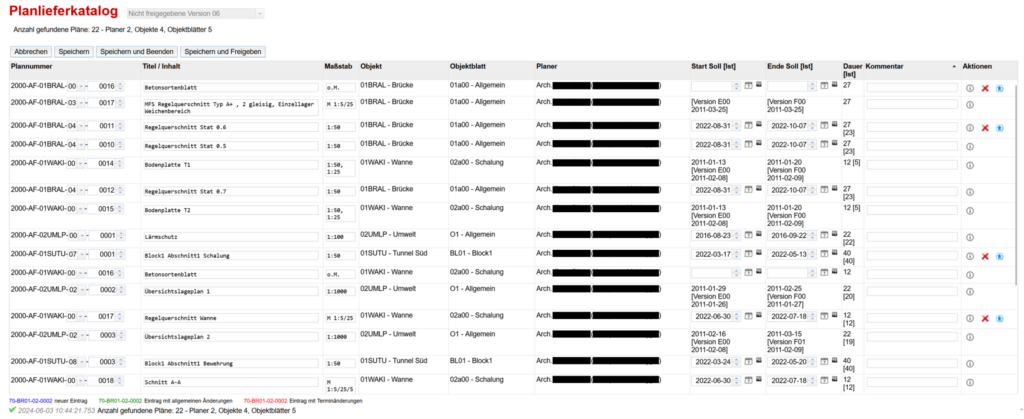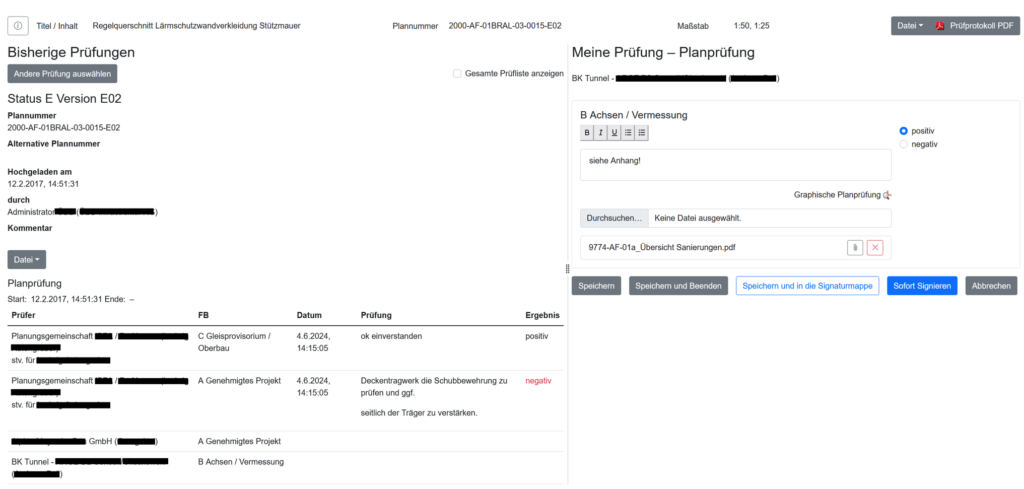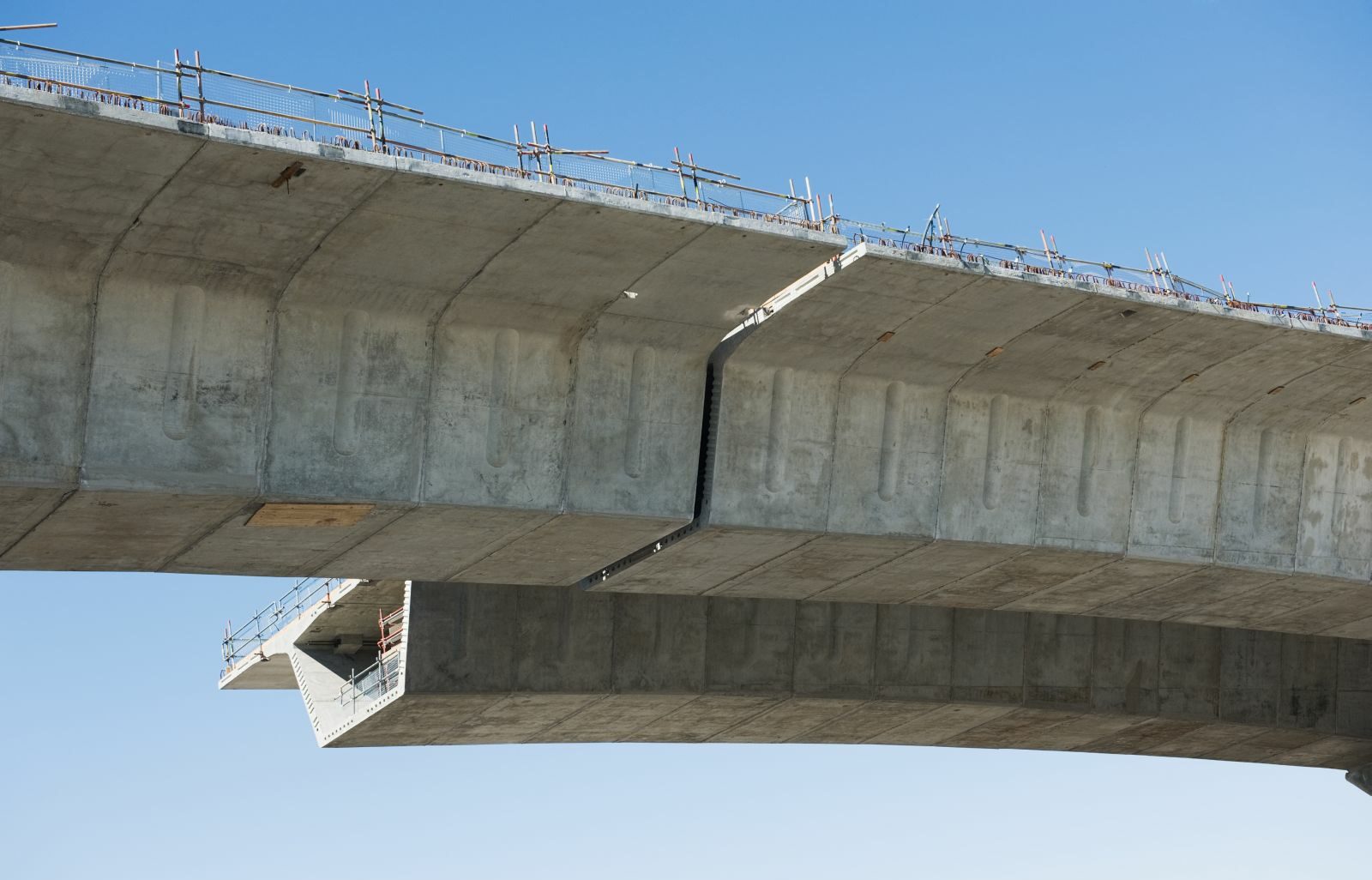
The project in c.des
c.des attempts to map a planned construction project as accurately as possible according to the results of the project planning phase of project management.
They are the basis for a project initiation in c.des. This distinguishes c.des significantly from a simple document management system with countless file folders.
It offers the following options for administering and structuring a project
- A project can be divided into several project phases (submission, execution, inventory, etc.)
- The project participants are assigned to the project with their responsibilities (roles such as planner, reviewer, contractor, etc.)
- Each project phase is divided into different objects (components, objects, systems, etc.) and managed in the object list
- Each object can be assigned one or more planners (owners of the object) or different review sheets
- In the review sheets, the desired project participants are assigned to the individual review phases and events in the review process
- The plans to be delivered for a project are entered in the plan delivery catalogue by the responsible planner
Project phases
The different project phases of a project represent the different, usually chronologically consecutive, phases of a construction project.
The inventory planning project phase also has special functions, for example to automatically transfer objects and plans from the execution phase.

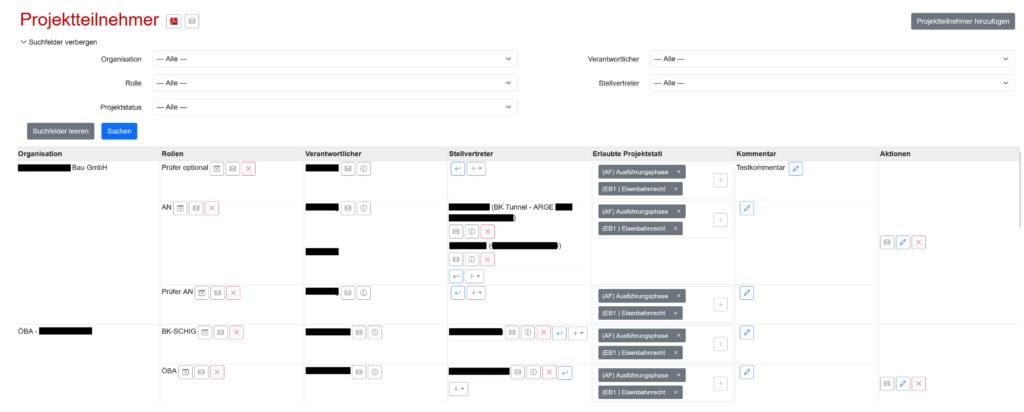
Project participants
Project participants are organizations involved in the project (e.g. contracted companies) with one or more assigned roles (planners, reviewers, etc.).
The tasks of the project participants are carried out by the employees of the organisations in a responsible or deputy role.
All participants have dedicated user access.
Objects
c.des does not work with folder structures, but enables the structuring of the construction project based on objects (facilities) and sub-objects. For each of these objects, responsibilities (planner, contractor, ÖBA, etc.) are defined, from which the corresponding rights for those involved arise. This means, for example, that it is precisely regulated which planner is allowed to edit the plan delivery catalog (plan list with optional delivery dates) for which object and upload the associated physical plans.
The object list enables versioning of the various versions of objects and review sheets. The most recently released version is the one that is relevant for the plan’s review process. Older versions can be viewed at any time for traceability purposes.
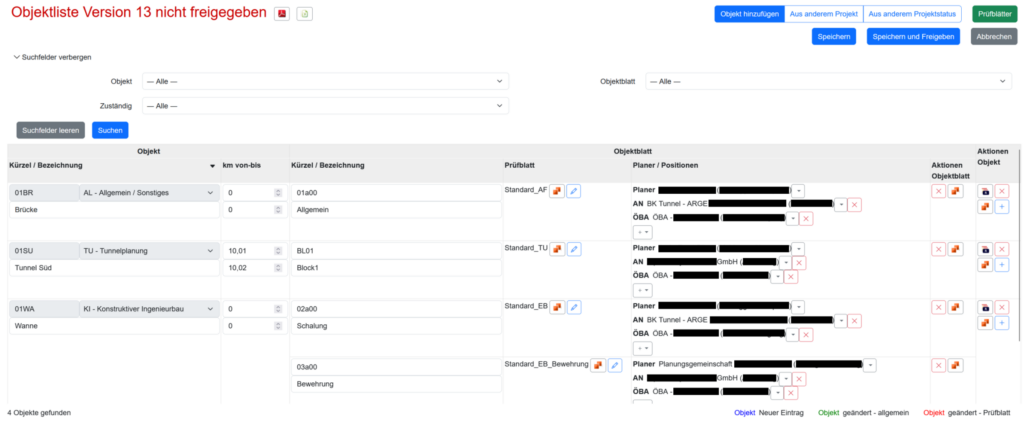
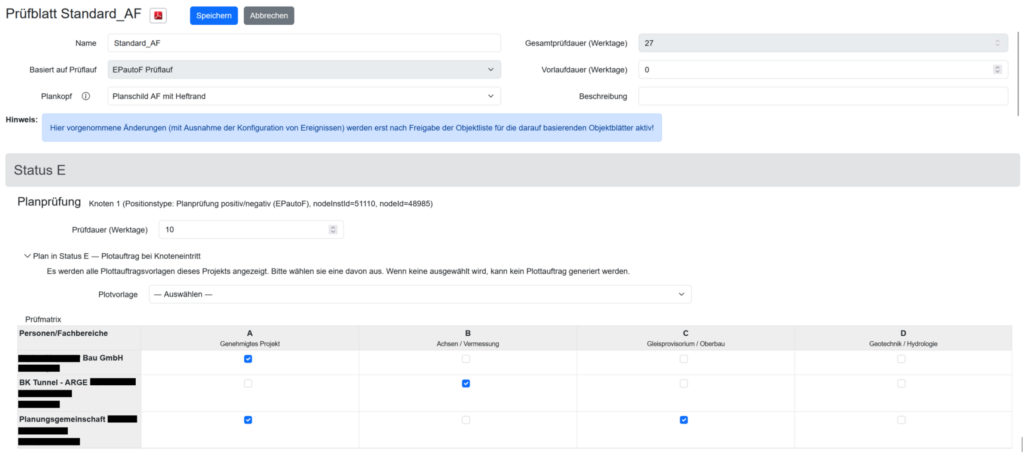
Review Sheets
Review sheets are individual images of the selected global review cycle (e.g. EPautoF). Project participants with the appropriate roles and an agreed review duration are assigned to the individual nodes of the review process.
For example, in the review node Status E-Plan Planprüfung (name freely selectable), those who have to carry out a review in this case are selected via checkboxes from a matrix of possible project participants. Depending on the type of review node, subjects to be reviewed can also be assigned, as in this example.
Furthermore, events (automatic e-mail notification and/or plot-/reproduction order) can be defined for each node.
Planned delivery catalogue
The plan delivery catalogue is a list of all plans to be delivered for a project. It is created and maintained by the commissioned planners.
Optionally, delivery dates can be defined which, in conjunction with the specified review duration of the review sheet, determine the agreed delivery date for execution on the construction site.
